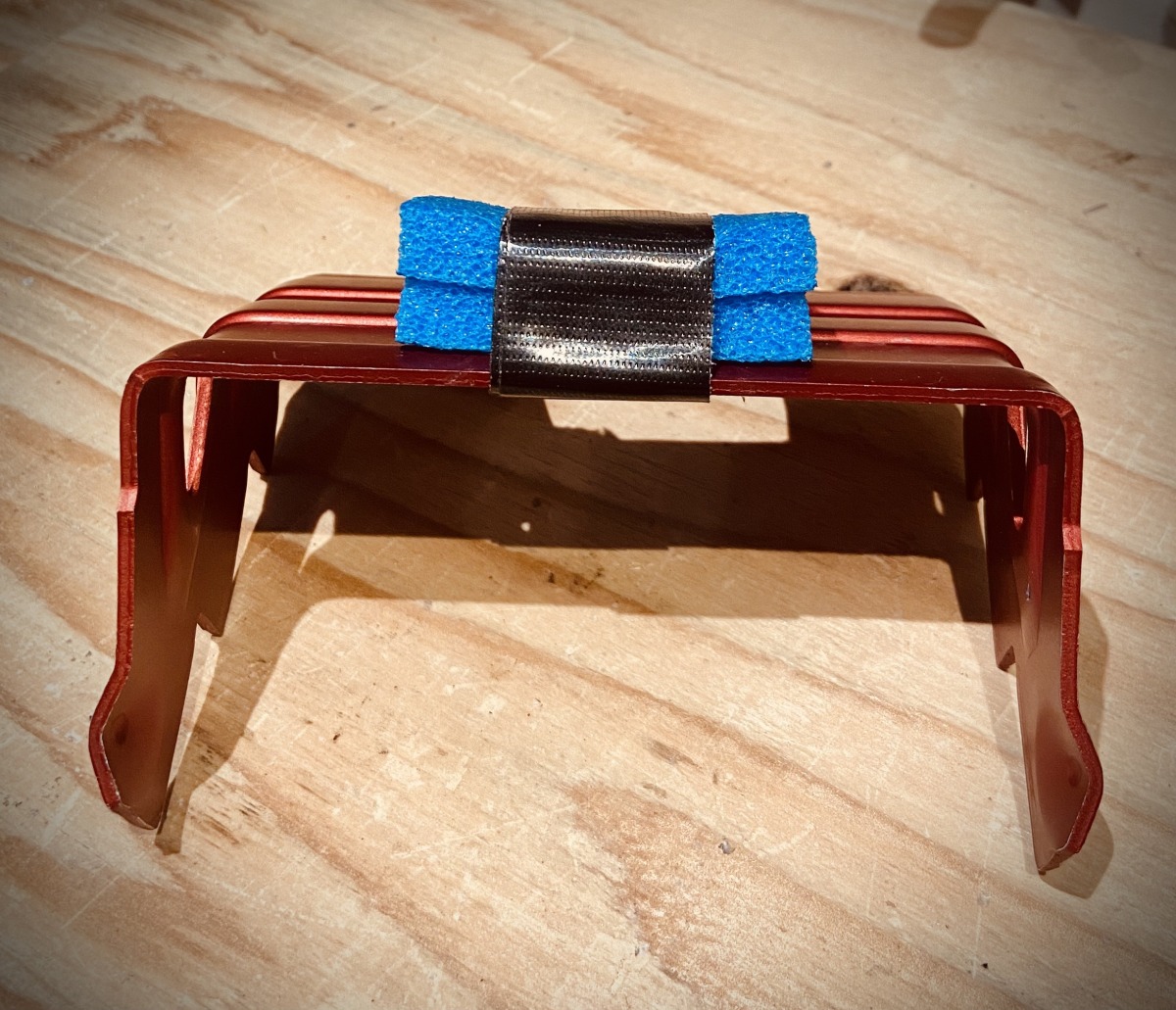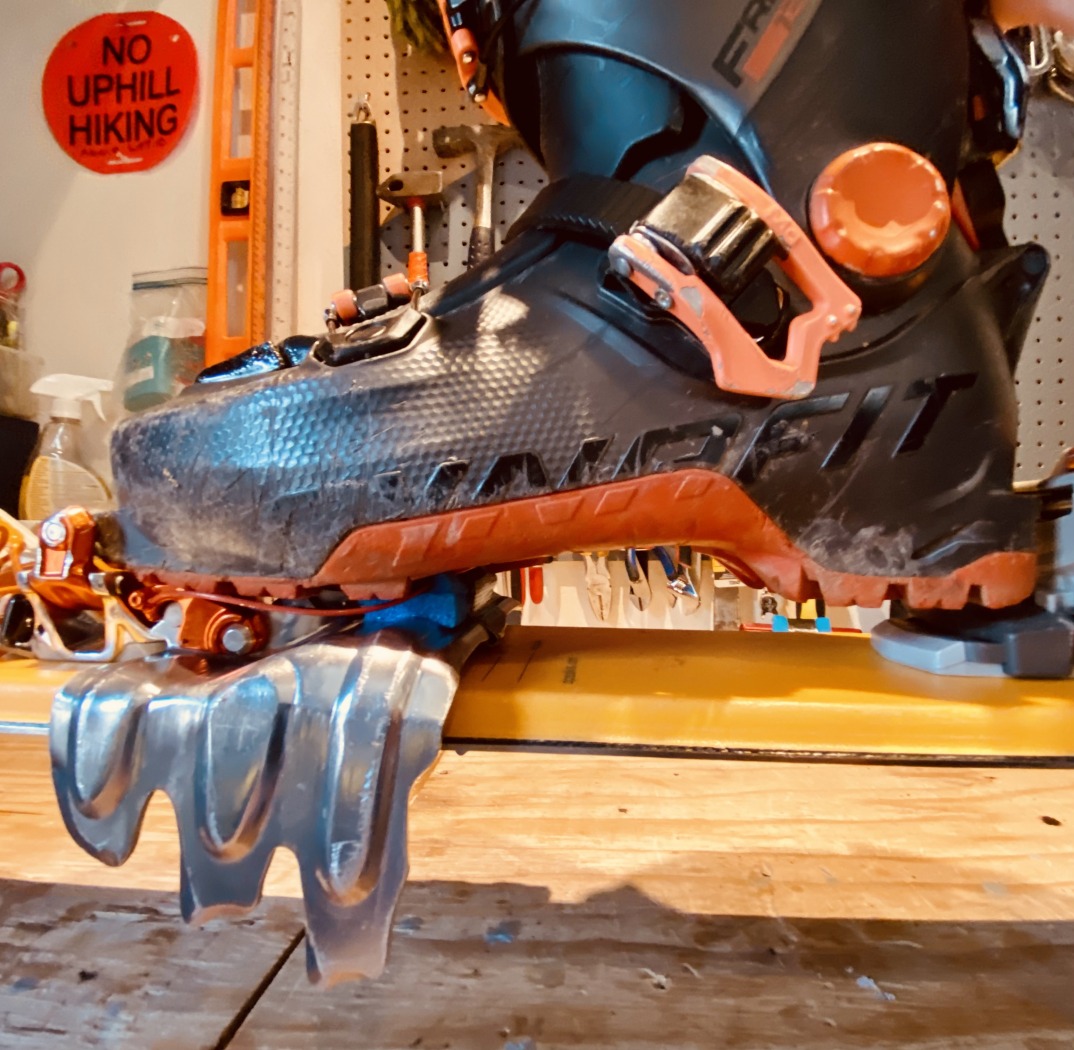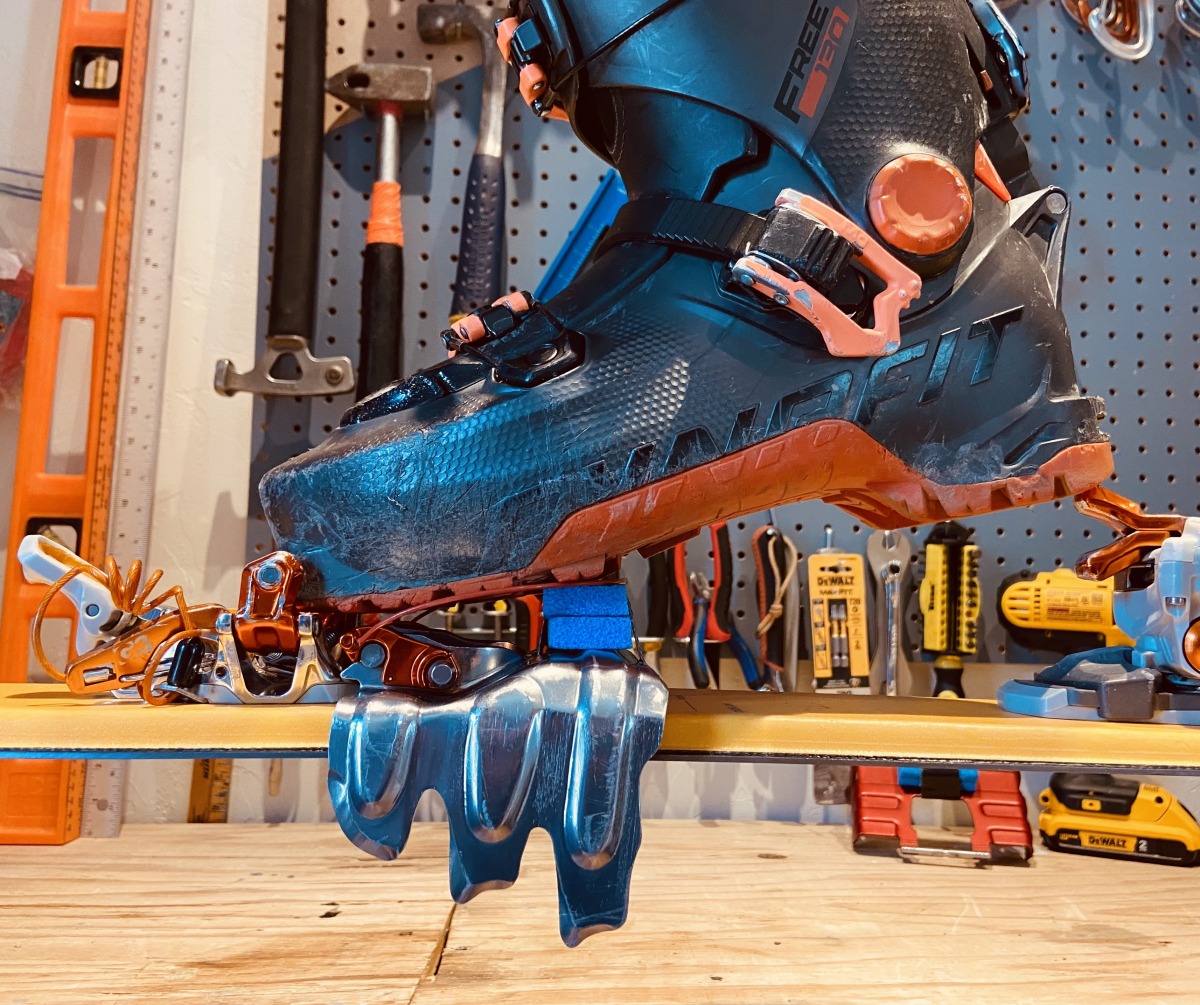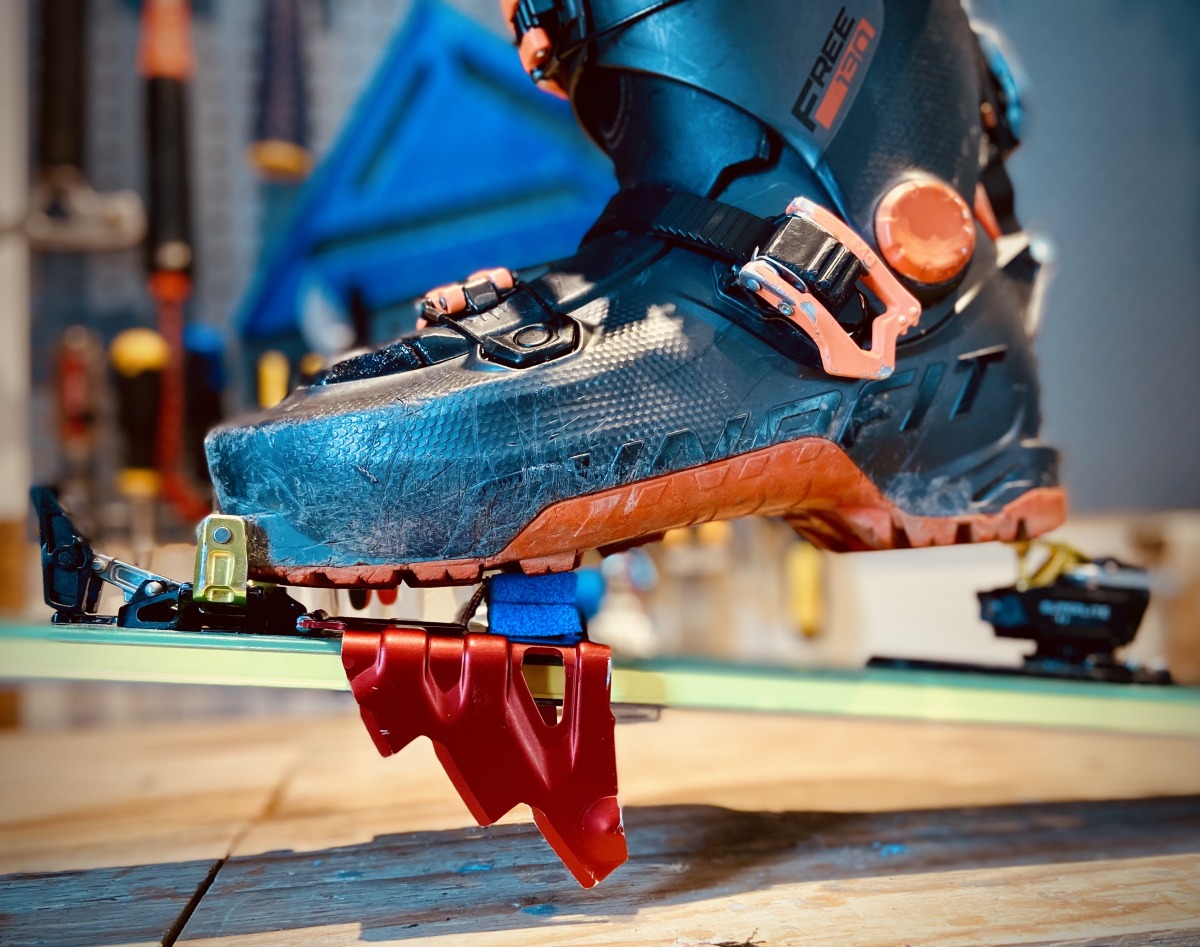
A simple and cheap mod for ski crampons: Hardy tape, a few small strips of foam, and presto.
As Spring sweeps across the Rocky Mountain West, snowpacks have begun to undergo their daily melt-freeze cycles. And, if your ski plans involve an early start, you better be prepared for some firm conditions. After a cool, clear night, the early morning Spring skintrack can be frozen solid, impenetrable to the edges of your skis, and impervious to the traction-seeking hairs on your skins. Quite literally, battling up a refrozen slope under these conditions can often break your spirit and bring you to your knees. But fear not, we do have one last tool in our ski mountaineering quiver just for this occasion: ski crampons ( a.k.a. “skrampons”).
A lot has already been written on WildSnow about the craft of skramponing. There’s from Doug Stenclik’s take: “ski crampons are likely one of those things you rarely need and are supremely bummed when you don’t have,” to Lou Dawson’s musings: “My wife wants me to aerate the lawn, so I figured a pair of skis with crampons would do the trick. But what crampons to use?” Jokes aside, let’s face it, ski crampons are a specialized tool for a specific problem we only occasionally face as backcountry skiers. But when you need them, you really need them. And with Lou’s question in mind, what ski crampons you choose to use and how you choose to use them (or modify them) can ultimately help you decrease the odds of skidding out on some frozen crust and taking that horrifying slide into oblivion (yikes!).
Solving the Problem
A shot of my ski crampons, modified Dynafit 120mm ‘pons, was highlighted in a recent social media post. The crampon mod was simple enough; some lightweight aluminum bumper bars cut to size and attached with good quality medical tape to the top of the skrampon. I found the square-stock aluminum in a thrift store and cut it down to size, then my creativity waned. I resorted to good old tape for a quick fix to my problem. And, what exactly is the problem I was trying to solve? Ski crampons often attach underneath your boot, right behind the toe piece of your binding, and they are designed to pivot so that you can still achieve a modicum of glide with each step. I often use ski crampons on steep, slick sidehills or when I want to punch it up a firm bowl in Spring, and it’s more convenient to point my skis straight up the fall line. I also sometimes find myself using my high heel riser in these situations, even though, in general, I try to avoid it. Here’s the problem: When your heel riser is up, your boot does not push the ski crampon down as far as it can go into the snow, and, as a result, you get less traction.

The problem, with higher risers installed (right photo), the ski crampon’s penetration into a firm surface is reduced.

Here we see a similar issue with the G3 setup. The left photo shows greater potential penetration with no riser engaged.
One solution to this problem is the “bumper” or “spacer” that I, and the many others who commented on my post, came up with. A different solution is to fix the crampon to the ski: B&D Ski Gear makes crampon locks to temporarily clamp the crampon down onto the ski, while Voile’s ski crampon is fixed in place (without pivot) wherever you want to mount the attachment knob to your ski. These solutions provide excellent traction, but you sacrifice all glide when you take away the pivoting feature of a ski crampon.

The bumper installed on a G3 (left) ski crampon and a Dynafit ski crampon (right). This is the bumper and pivot combo.
And, if the comments on my post say anything, people prefer the pivot and the DIY “bumper” solution combo. From wine corks to plastic bottle caps to chunks of blue-foam pads, folks have been sticking things to the tops of their skrampons to solve this problem for years. I think the foam pad stack is the most elegant solution to this problem and is also universally doable for all the different ski crampons out there. The foam is stiff enough to push the pons down into the snow in high riser mode and squishy enough to flatten out when walking with risers down. Foam is also super light, cheap, and easy to replace. I liked this solution so much that I ditched my aluminum spacers for the blue foam bumpers. I’ve heard that some folks use zip-ties to attach their foam to the top of the crampon, but I went with some Gorilla Tape, which I’m hoping will tolerate the repeated squishing and un-squishing of stepping on the foam (possibly better than zip-ties?). But, considering the foam will also compress and eventually need replacing, we’ll have to wait and see how long this rig lasts.

The foam pad stack on the G3 Ion, no riser.

The foam pad stack with the Ion’s high riser engaged.

The foam pad stack with the high riser engaged on the Dynafit Superlight 2.0 binding.
What are your thoughts on ski crampon mods? Do YOU believe in high heel-riser use with skrampons? Let the debate begin. These bumpers seem to be one of the classic DIY mods that each backcountry skier has their take on, so let us know what you think.
Chris Dickson lives in Colorado’s San Juan Mountains where he guides, is an avalanche educator, and produces The San Juan Snowcast. He can be found @sanjuansnowcast.
